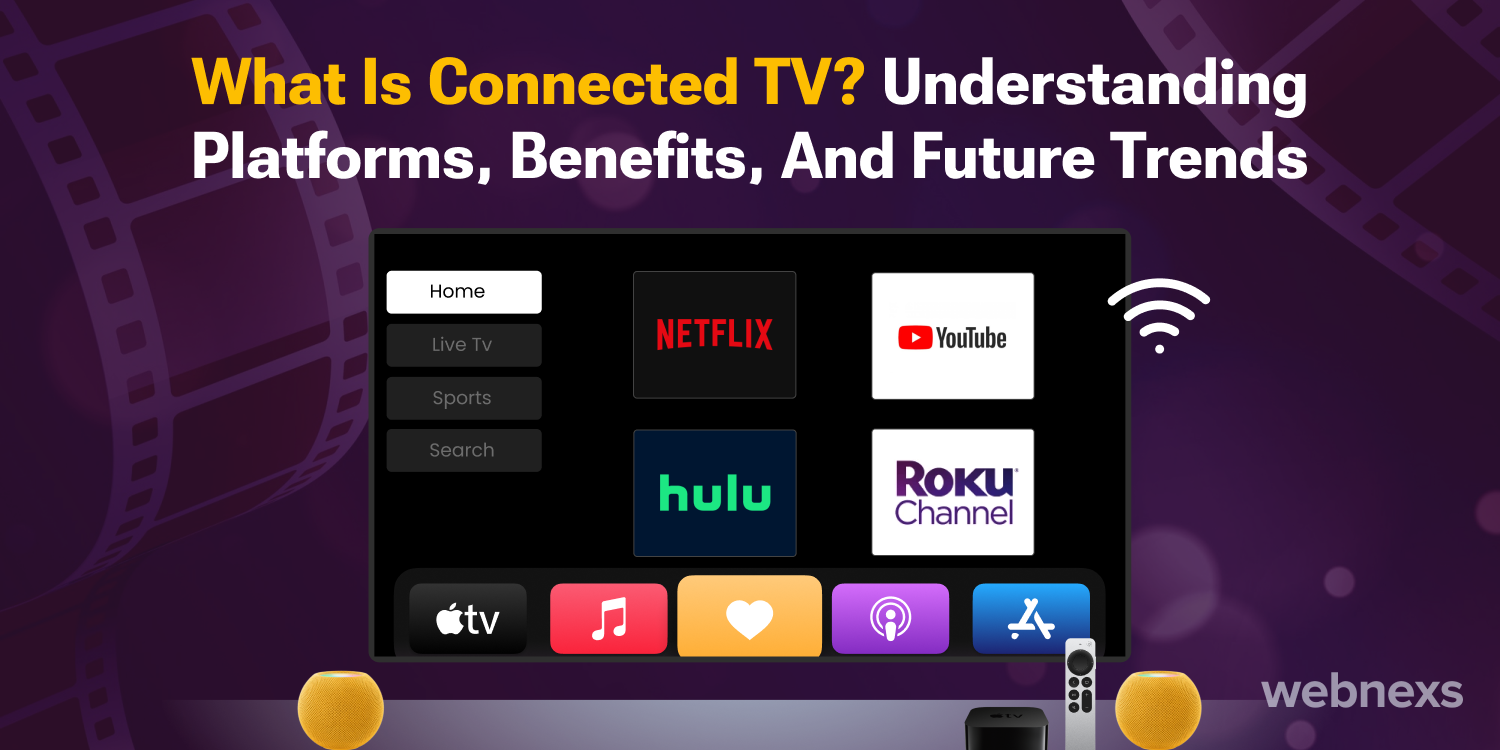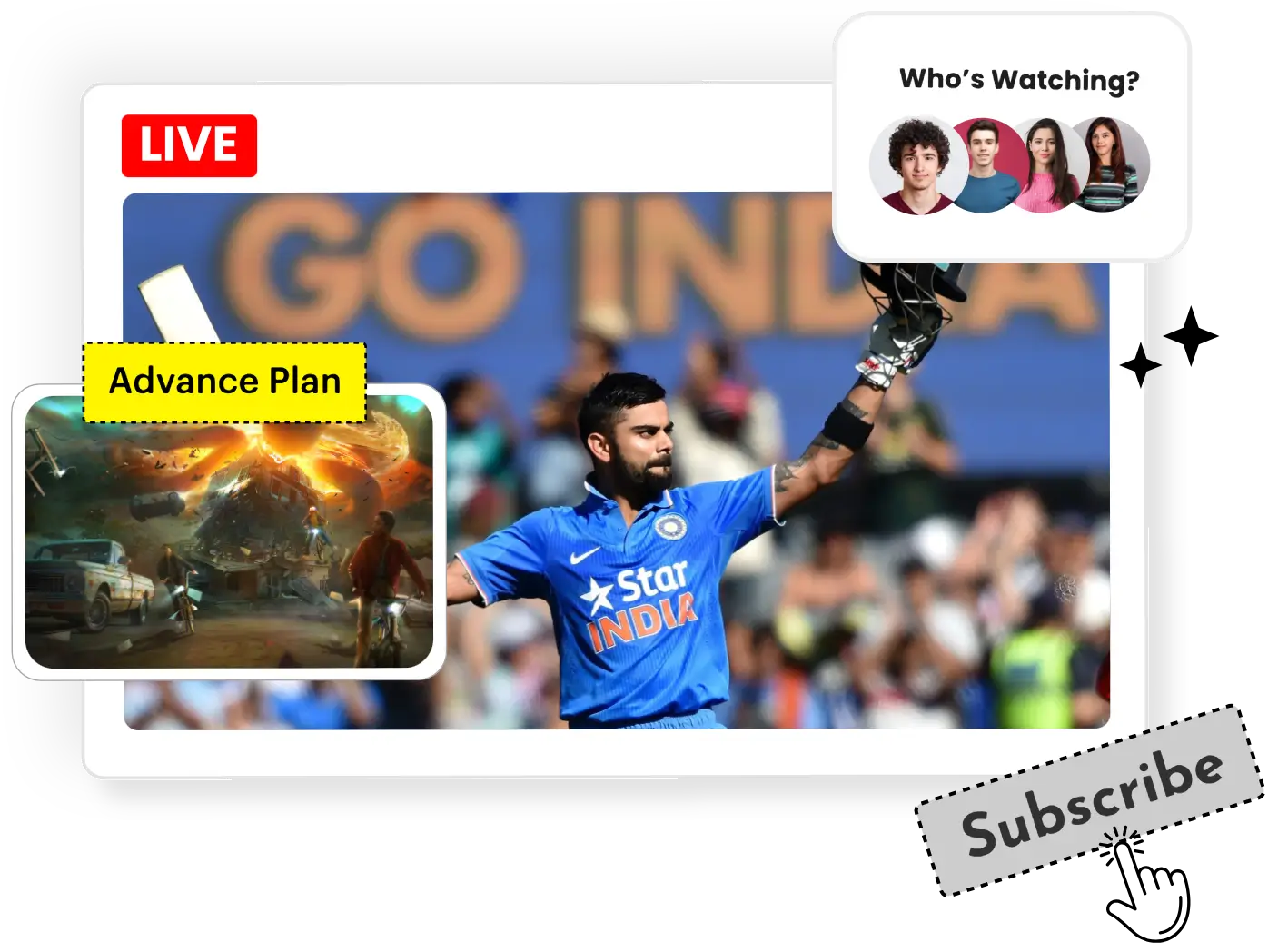Connected TV (CTV) has become an integral part of modern entertainment and digital advertising ecosystems. It refers to any television set that is connected to the internet, allowing users to stream video content from services such as Netflix, YouTube, and Hulu. Unlike traditional linear TV, Connected TV offers on-demand access to content and enables interactions beyond just watching, such as downloading apps and making purchases. As more consumers shift from cable TV to streaming services, Connected TV continues to revolutionize how we consume media.
Introduction to Connected TV
Connected TV is a concept that encompasses television sets with internet connectivity, allowing users to access a vast range of online content, including streaming services, websites, and apps. This evolution from traditional TV has been driven by technological advances, shifting consumer preferences, and the rapid growth of internet infrastructure globally.
In essence, a Connected TV allows users to connect their television to the internet either via built-in Wi-Fi or through external devices like streaming sticks or game consoles. Once connected, users can access both traditional TV content and a wide variety of digital media from platforms like Netflix, Amazon Prime Video, YouTube, and even social media sites.
How Does Connected TV Work?
Connected TV operates by leveraging the internet to deliver content rather than relying on traditional broadcast or cable methods. Here’s a breakdown of how the technology works:
Internet Connectivity: Most modern TVs come with built-in Wi-Fi, while older models can connect to the internet using external devices like Roku, Amazon Fire TV, Apple TV, or gaming consoles like PlayStation and Xbox.
Content Streaming: Once connected to the internet, the TV accesses streaming services through applications. These applications are either pre-installed or available for download from an app store on the TV’s operating system. The content itself is streamed in real-time from remote servers over the internet, utilizing a process called “over-the-top” (OTT) content delivery.
Interaction with Other Devices: Connected TVs can interact with other smart home devices or external media sources such as smartphones and tablets. This enables functionalities like screen mirroring, voice control via smart assistants (Alexa, Google Assistant), and even gaming.
The key innovation is the shift away from linear content delivery towards a more flexible and customizable experience that revolves around the user’s preferences and viewing habits.
Benefits of Connected TV
Connected TV offers several advantages for both consumers and businesses:
1. On-Demand Content
Connected TV allows viewers to access content whenever they want, moving away from the rigid schedules of traditional television. This on-demand experience is powered by streaming platforms that offer a wide range of movies, TV shows, documentaries, and even live events.
2. Personalized Experiences
Many CTV platforms use algorithms to recommend content based on user preferences and viewing habits. This personalized content delivery leads to better engagement and user satisfaction, as people are more likely to find content they enjoy.
3. Interactive Advertising
From a business perspective, Connected TV opens new doors for advertising. With the ability to target specific demographics, advertisers can deliver personalized ads to users based on their online behavior, interests, and past interactions. Additionally, CTV ads are non-skippable, offering higher engagement rates.
4. Seamless Integration with Smart Devices
Connected TVs can integrate with other smart home devices, such as smart speakers, thermostats, and security systems, creating a connected ecosystem where users can control various functions with their TV remote or even voice commands.
5. Cost-Effective
For many consumers, Connected TV provides a more cost-effective entertainment solution. With subscription services offering affordable plans and the option to customize viewing packages, users can avoid the high costs associated with traditional cable TV bundles.
Common Connected TV Platforms
Several major platforms dominate the Connected TV market, each offering its unique ecosystem of apps, services, and features. Here are some of the most popular platforms:
1. Roku
Roku is one of the most widely used CTV platforms, offering an extensive range of streaming devices, including Roku TVs and Roku streaming sticks. Its platform gives users access to thousands of apps (called channels on Roku) across multiple categories, from video-on-demand services to niche content.
2. Amazon Fire TV
Amazon Fire TV provides users with access to a wide array of content through its devices, such as the Fire TV Stick, Fire TV Cube, and Fire TV Edition smart TVs. Integrated with Amazon’s Alexa, Fire TV allows users to search for content, control playback, and even manage other smart home devices through voice commands.
3. Apple TV
Apple TV is known for its sleek interface and seamless integration with the Apple ecosystem. Available as a set-top box or pre-installed on some smart TVs, Apple TV gives users access to popular streaming services, Apple’s own Apple TV+ service, and integration with services like iTunes and AirPlay.
4. Google Chromecast
Google Chromecast allows users to cast or mirror content from their smartphones, tablets, or computers to the TV. It integrates well with Google services like YouTube, Google Play, and Google TV, and offers voice control via Google Assistant.
5. Samsung Smart TV (Tizen OS)
Samsung’s Tizen OS-powered smart TVs have a built-in app store and offer access to various streaming services. These TVs also provide robust integration with Samsung’s ecosystem of smart home devices and its virtual assistant, Bixby.
Key Libraries for Developing Connected TV Apps
Developers who want to create apps for Connected TV platforms have several libraries and SDKs (software development kits) at their disposal. These tools streamline the app development process and ensure compatibility with various platforms.
React Native for CTV App Development
React Native is a popular framework for building apps across multiple platforms, including Connected TV. With React Native, developers can write code in JavaScript and deploy it on platforms like Roku, Apple TV, and Android TV, reducing development time and cost.
Samsung Tizen OS SDK
Samsung’s Tizen OS is the operating system behind its smart TVs. The Tizen SDK allows developers to build, test, and deploy apps specifically for Samsung smart TVs. It supports various web technologies like HTML5 and JavaScript, making it accessible to a broad range of developers.
Roku SDK
The Roku SDK is designed specifically for developing apps (or “channels”) for Roku devices. It provides developers with tools to build customized user interfaces, manage media content, and integrate with Roku’s ad network for monetization. The SDK supports BrightScript, a language similar to JavaScript.
Real-World Applications of Connected TV
Connected TV has practical applications in many areas, including advertising, entertainment, and gaming:
1. Advertising
CTV is a growing channel for digital advertisers. Unlike traditional TV ads that target a broad audience, CTV ads are highly targeted, often delivered to specific demographics based on user data. Brands can measure engagement, conversion, and other key metrics in real-time, making it a valuable tool for performance marketing.
2. Entertainment
The entertainment industry has been significantly impacted by CTV, with platforms like Netflix, Hulu, and Disney+ becoming dominant players in home entertainment. These platforms offer original content, live sports, and documentaries, providing viewers with endless entertainment options.
3. Gaming
Gaming on CTV platforms is growing rapidly. Consoles like PlayStation and Xbox offer game streaming services on CTV, and standalone platforms like Google Stadia and Amazon Luna are also entering the market. This expansion allows users to access high-quality games without needing a gaming console.
The Future of Connected TV
The future of Connected TV is bright, with several trends set to shape the industry:
Increased Personalization: As CTV platforms gather more data, they will continue to improve personalization algorithms, delivering more tailored content and ads to users.
Ad-Supported Models: Subscription fatigue may lead to a rise in ad-supported CTV services, where users can access content for free in exchange for viewing ads.
Integration with Augmented Reality (AR): AR capabilities may be integrated into CTV experiences, especially in gaming and interactive advertising.
Expansion of Live Streaming: Live streaming of events like sports, concerts, and news will continue to grow, giving CTV users more real-time content.
Conclusion
Connected TV is revolutionizing how we consume media and interact with digital content. Its flexibility, personalization, and integration with other smart devices make it a key player in the future of home entertainment. As technology continues to evolve, CTV will play an increasingly vital role in advertising, app development, and overall media consumption.


